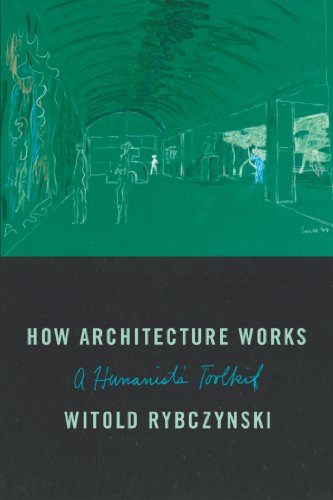Verwandte Artikel zu How Architecture Works: A Humanist's Toolkit

Inhaltsangabe
An essential toolkit for understanding architecture as both art form and the setting for our everyday lives
We spend most of our days and nights in buildings, living and working and sometimes playing. Buildings often overawe us with their beauty. Architecture is both setting for our everyday lives and public art form—but it remains mysterious to most of us.
In How Architecture Works, Witold Rybczynski, one of our best, most stylish critics and winner of the Vincent Scully Prize for his architectural writing, answers our most fundamental questions about how good—and not-so-good—buildings are designed and constructed. Introducing the reader to the rich and varied world of modern architecture, he takes us behind the scenes, revealing how architects as different as Frank Gehry, Renzo Piano, and Robert A. M. Stern envision and create their designs. He teaches us how to "read" plans, how buildings respond to their settings, and how the smallest detail—of a stair balustrade, for instance—can convey an architect's vision. Ranging widely from a war memorial in London to an opera house in St. Petersburg, from the National Museum of African American History and Culture in Washington, D.C., to a famous architect's private retreat in downtown Princeton, How Architecture Works, explains the central elements that make up good building design. It is an enlightening humanist's toolkit for thinking about the built environment and seeing it afresh.
"Architecture, if it is any good, speaks to all of us," Rybczynski writes. This revelatory book is his grand tour of architecture today.
Die Inhaltsangabe kann sich auf eine andere Ausgabe dieses Titels beziehen.
Über die Autorin bzw. den Autor
Witold Rybczynski has written about architecture for The New Yorker, The Atlantic, The New York Times, and Slate. Among his award-winning books are Home, The Most Beautiful House in the World, and A Clearing in the Distance, which won the J. Anthony Lukas Prize. He lives with his wife in Philadelphia, where he is the emeritus professor of architecture at the University of Pennsylvania. How Architecture Works is his eighteenth book.
„Über diesen Titel“ kann sich auf eine andere Ausgabe dieses Titels beziehen.
Gratis für den Versand innerhalb von/der USA
Versandziele, Kosten & DauerSuchergebnisse für How Architecture Works: A Humanist's Toolkit
How Architecture Works : A Humanist's Toolkit
Anbieter: Better World Books, Mishawaka, IN, USA
Zustand: Good. Former library book; may include library markings. Used book that is in clean, average condition without any missing pages. Artikel-Nr. 5759350-6
Anzahl: 3 verfügbar
How Architecture Works: A Humanist's Toolkit
Anbieter: ThriftBooks-Atlanta, AUSTELL, GA, USA
Hardcover. Zustand: Very Good. No Jacket. May have limited writing in cover pages. Pages are unmarked. ~ ThriftBooks: Read More, Spend Less. Artikel-Nr. G0374211744I4N00
Anzahl: 1 verfügbar
How Architecture Works: A Humanist's Toolkit
Anbieter: ThriftBooks-Dallas, Dallas, TX, USA
Hardcover. Zustand: Good. No Jacket. Pages can have notes/highlighting. Spine may show signs of wear. ~ ThriftBooks: Read More, Spend Less. Artikel-Nr. G0374211744I3N00
Anzahl: 1 verfügbar
How Architecture Works: A Humanist''s Toolkit
Anbieter: THE CROSS Art + Books, Sydney, NSW, Australien
22.0 x 24.0ms 356pp b/w illusts very good+ hardback & dustwrapper Rybczynski explains how good and less-good buildings are designed and constructed. The chapters are; ideas; the setting; site; plan; structure; skin; details; style; the past; taste. Artikel-Nr. 20756093
Anzahl: 1 verfügbar

